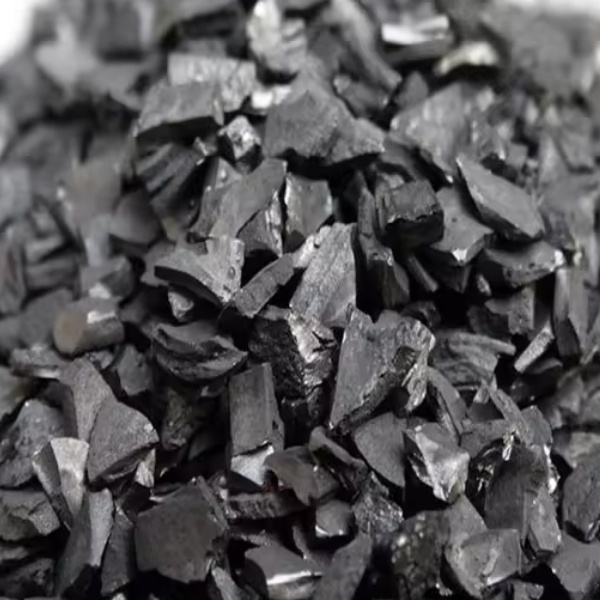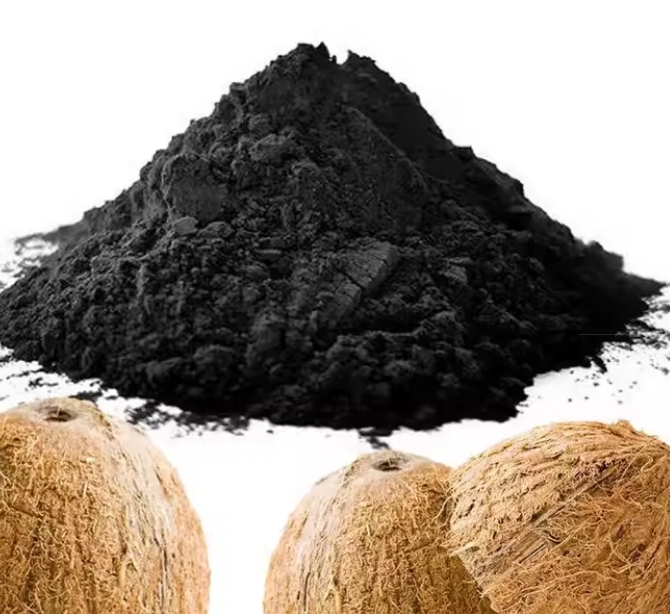Manufacturing activated carbon from coconut shells involves several steps, from raw material preparation to activation and final processing. Here’s an overview of the process:

- Raw Material Selection
Coconut Shells: Select high-quality, mature coconut shells as the raw material. Ensure they are free from impurities and contaminants.
- Carbonization
Heating: Heat the coconut shells in an oxygen-free environment to convert them into charcoal. This process, called pyrolysis, typically occurs at temperatures between 400°C to 800°C. Cooling: Allow the resulting charcoal to cool in an inert environment to prevent it from igniting when exposed to air.
- Activation
Chemical Activation:
- Impregnation: Mix the charcoal with a chemical activating agent, such as phosphoric acid (H3PO4) or potassium hydroxide (KOH).
- Heating: Heat the mixture to a higher temperature (450°C to 900°C) to develop the porous structure. The chemical agent helps to create the pores by dehydrating the material and removing volatile substances.
Physical Activation:
- Steam Activation: Expose the charcoal to steam at high temperatures (800°C to 1100°C). The steam reacts with the carbon, creating a highly porous structure.
- Carbon Dioxide Activation: Similar to steam activation, but using carbon dioxide (CO2) instead of steam.
- Washing and Drying
Washing: Wash the activated carbon thoroughly to remove residual activating agents and other impurities. This step is critical to ensure the purity and safety of the final product. Drying: Dry the washed activated carbon to remove excess moisture. This can be done using hot air ovens or other drying methods.
- Crushing and Sieving
Crushing: Crush the dried activated carbon to the desired particle size. Sieving: Sieve the crushed carbon to obtain uniform particle sizes suitable for different applications.
- Packaging and Storage
Packaging: Pack the activated carbon in airtight, moisture-proof containers to prevent contamination and maintain its adsorptive properties. Storage: Store the packaged activated carbon in a cool, dry place away from direct sunlight and moisture.
Quality Control
Throughout the manufacturing process, rigorous quality control measures should be in place to ensure the activated carbon meets the required specifications and standards. This includes testing for parameters such as surface area, pore volume, iodine number, and ash content.
Applications
Coconut shell activated carbon is widely used for:
Water and air purification
Gold recovery
Food and beverage processing
Medical and pharmaceutical applications



